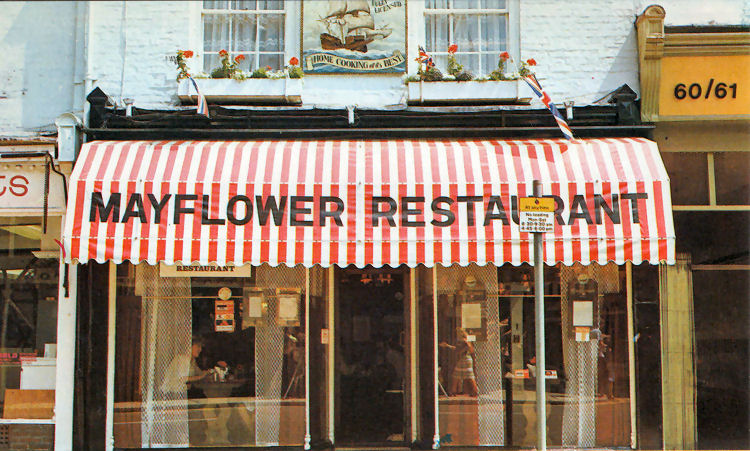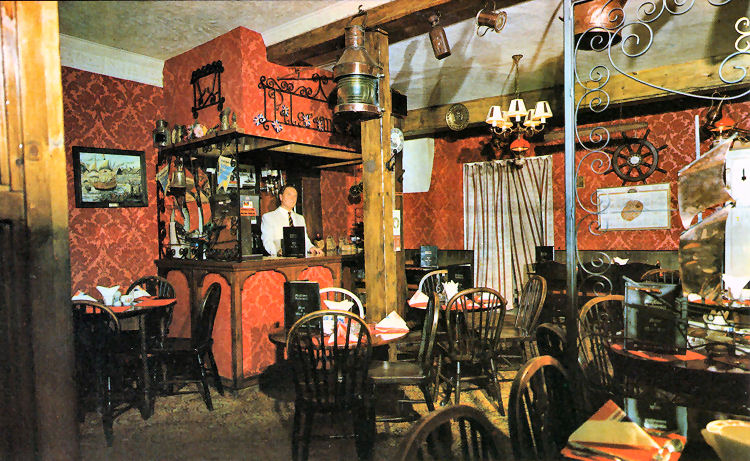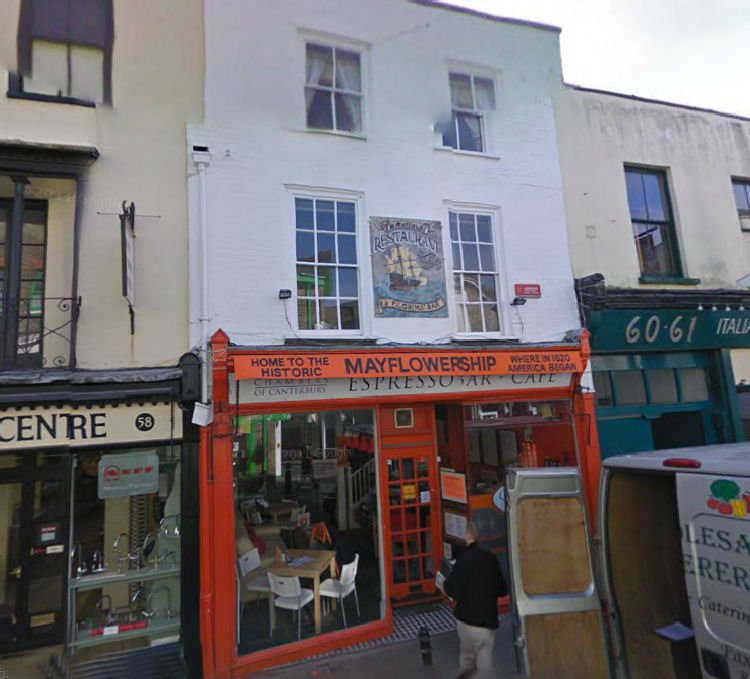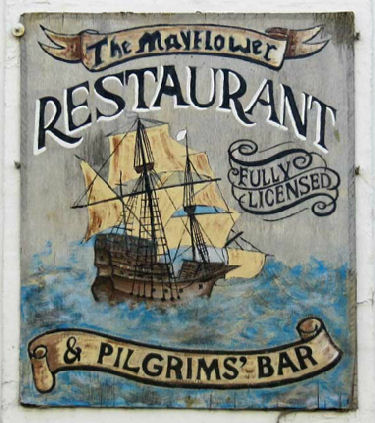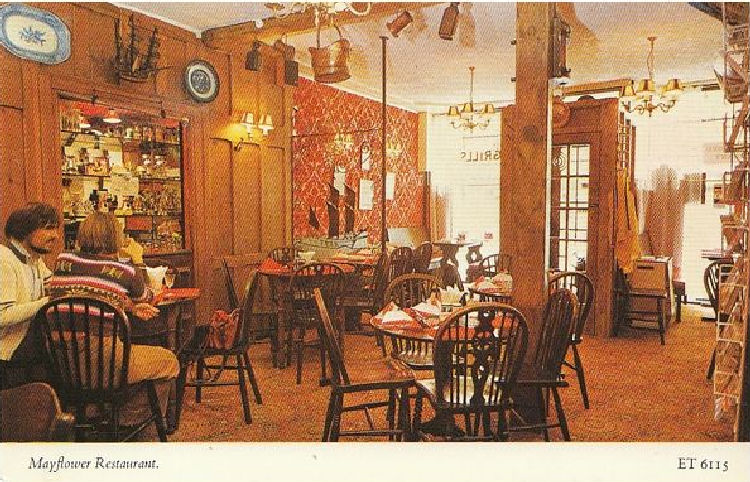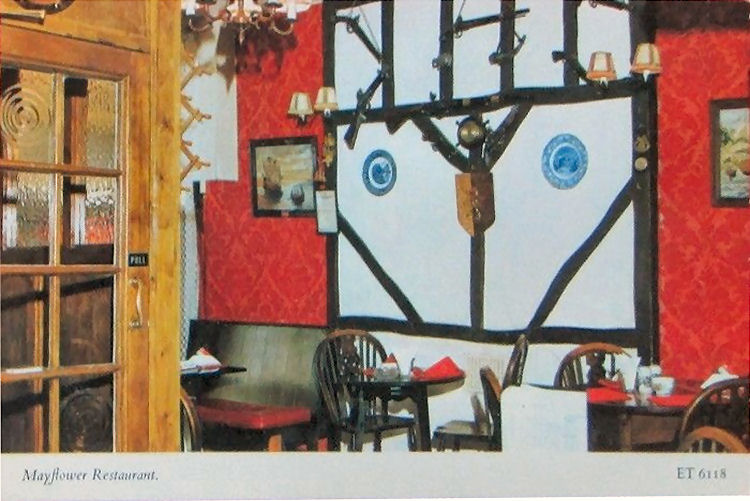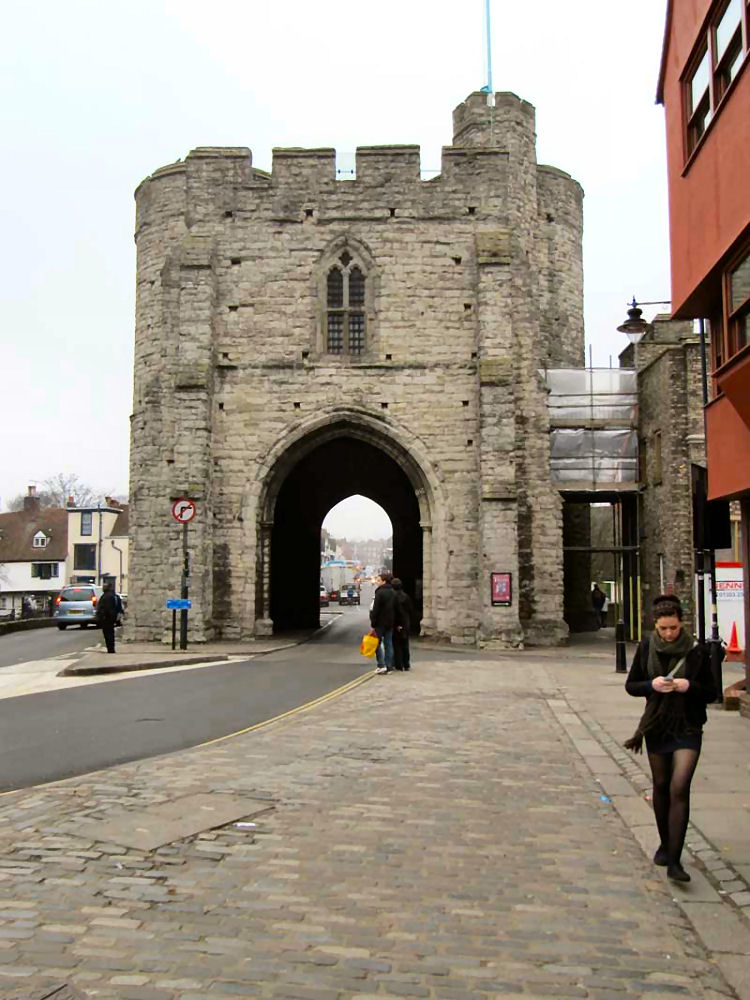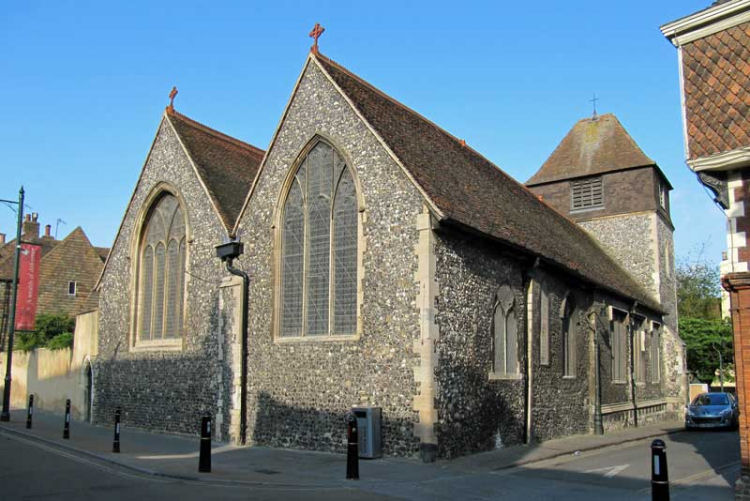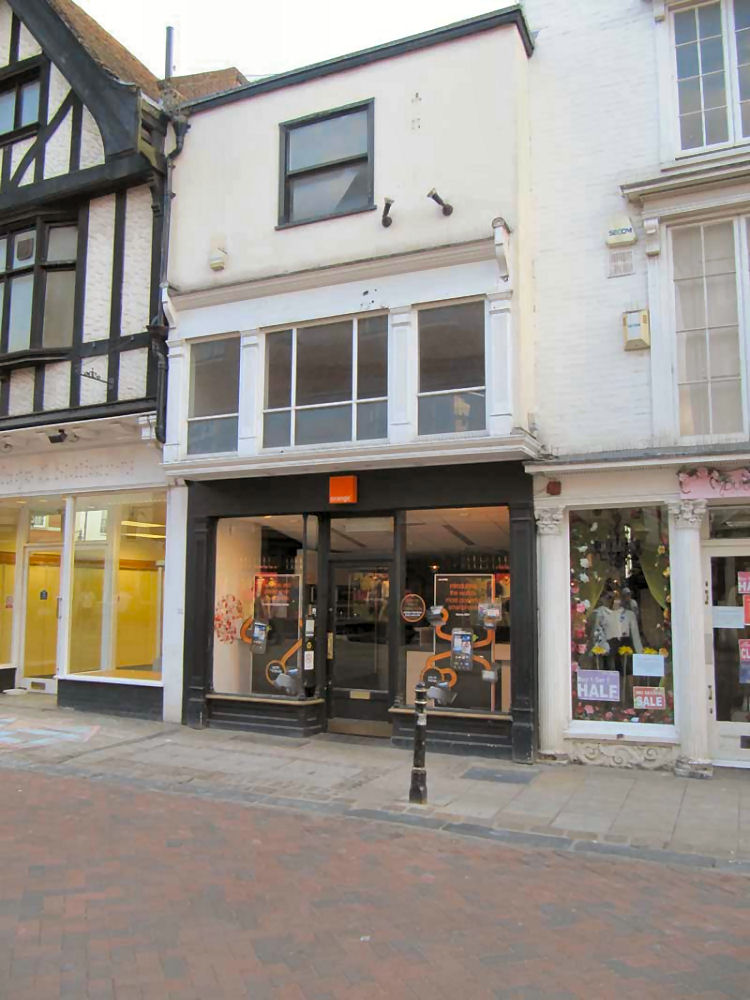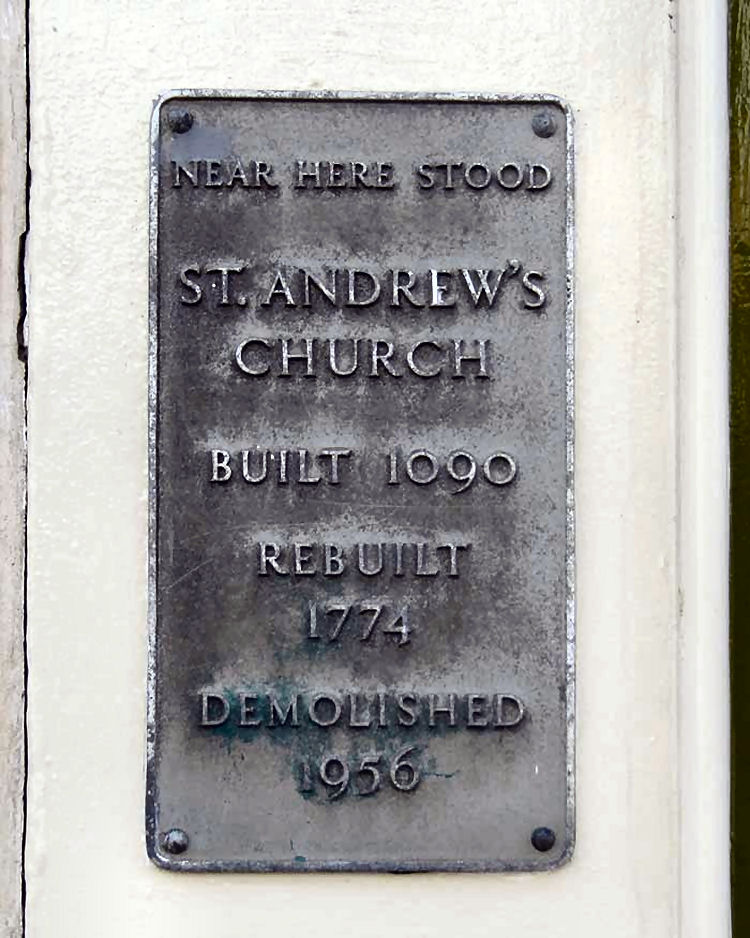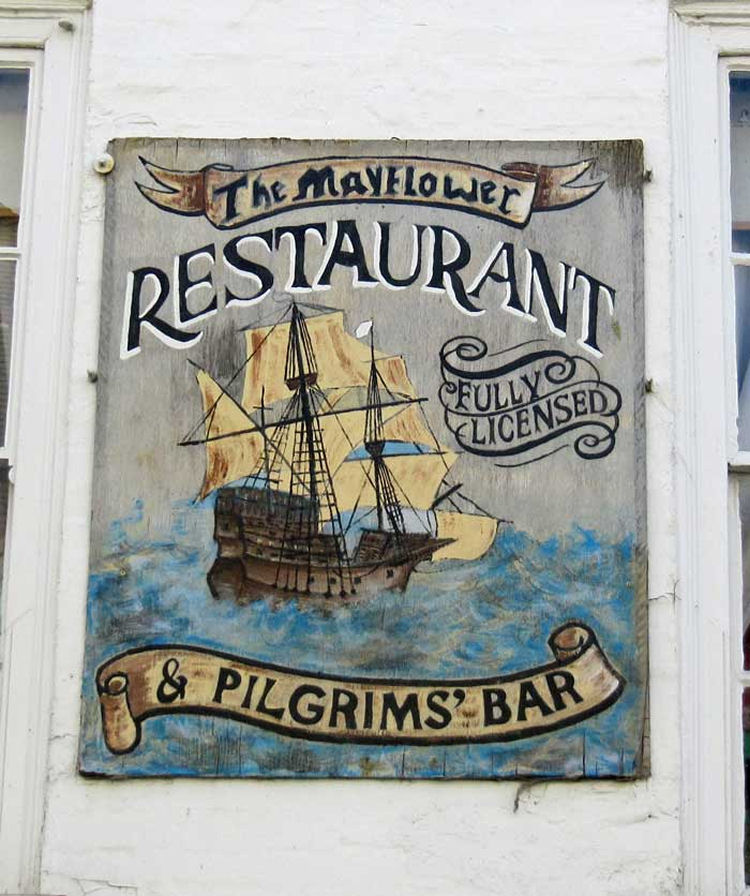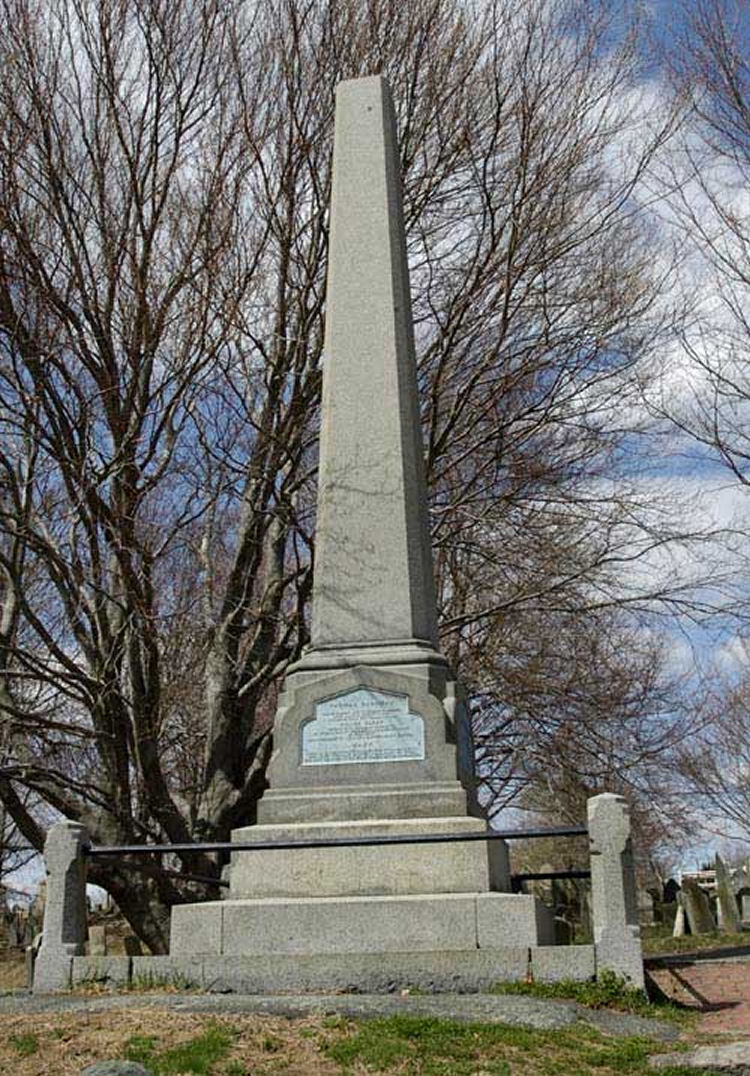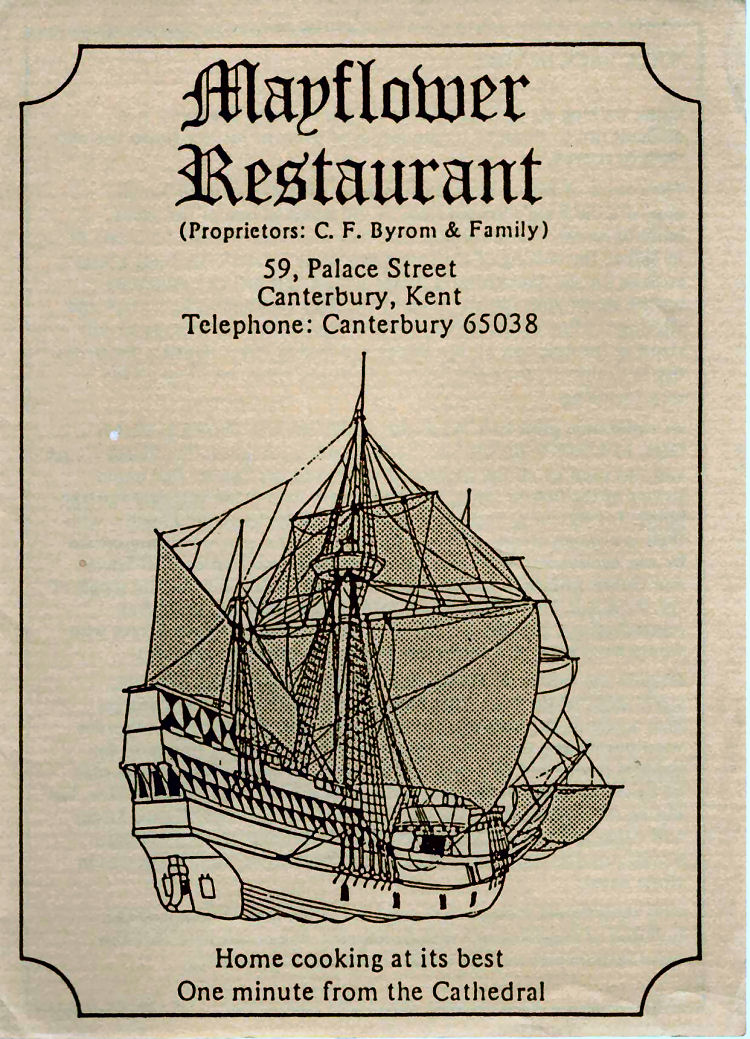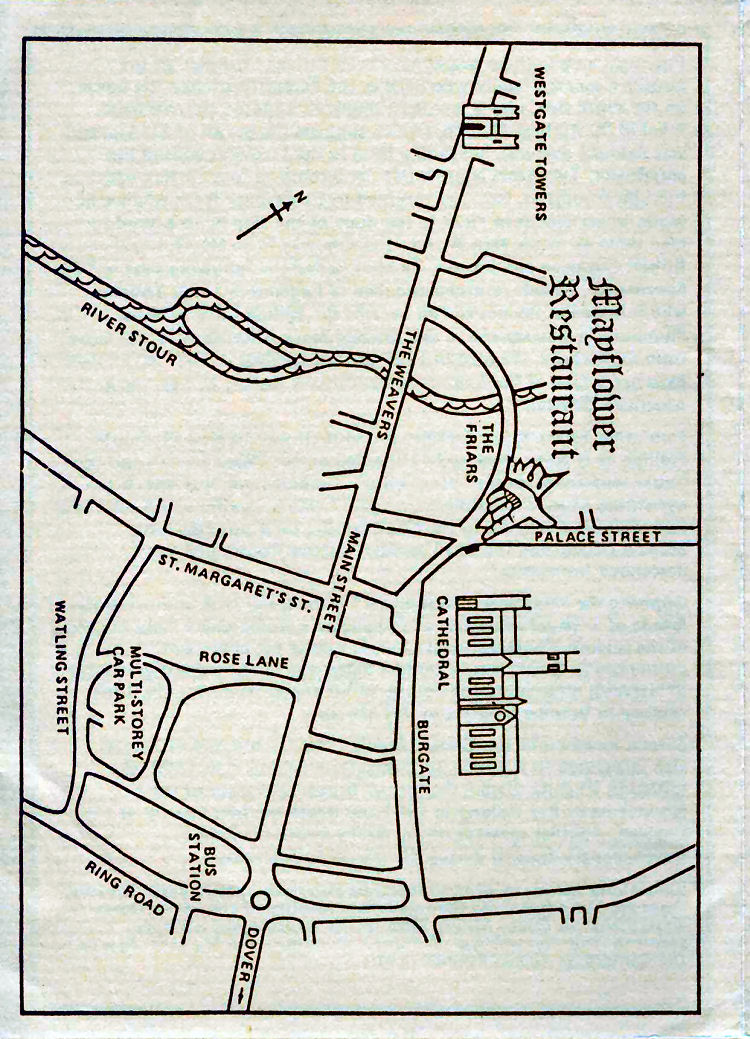|
Inside the above pages was the following information:-
WALK BACK IN TIME.
When walking along Palace Street (in Canterbury, England), it is
difficult not to think of the hundreds of years of history those ancient
walls have seen.
The course of Palace Street as it is now, with its awkward corner
opposite the King’s School shop, is the result of one of the many
building works of Archbishop Lanfranc undertaken some ten years or so
before the writing of the Domesday book in 1086. He built a large
enclave for the Archbishop’s Palace with a new hall and adjoining rooms,
destroying twenty seven of the fifty two houses he owned and altering
the line of the street. Some of the houses not destroyed still stand at
the junction of Sun Street and Palace Street. Until a disastrous fire in
Cranmer’s time the Palace side of the street must have been very
imposing.
At some time prior to 1243 a gate, which became known as Parker’s Gate,
had been built into the Precinct wall leading into the Palace Court and
was used by all the important visitors to the Palace. The upper stories
of the houses lining the street must have made splendid vantage points
for watching the arrival of Monarchs, Bishops and Knights with their
rentinues. Henry VIII and Catherine of Aragon were entertained by the
Archbishop Warham so also was Emperor Charles V of Spain; and Queen
Elizabeth I dined with Archbishop Parker after the repair of the main
hall. Dr. William Urry, former Cathedral Archivist, has researched and
plotted the 12th century tenants of Palace Street who would have
witnessed the hustle and bustle of these occasions.
Despite the variety of architectural periods which front onto the street
most of the properties have cellars which are ancient and go back as far
as Dr. Urry’s 12th century tenants. The Georgian facades were put up at
a time when Palace Street was quieter, traces of the original beams and
tiles may still be seen. An early 17th century map of Canterbury shows
the properties arranged much as they are now, but during the 18th
century the part of the street between Orange Street and Alphege Lane
was known as "The Red Pump" from the pump which stood in the street
opposite the "Mayflower Inn" (as it was in those days).
The "Mayflower Restaurant" (as it is known today), stands at the
junction of Palace Street with Sun Street, and it was here that the
early settlers met to discuss their emigration to America.
Foremost among these would have been Robert Cushman of the puritan
Cushman family who lived in the Parade (probably the house on the south
side, now a jewellery shop). In 1606 he married Sarah Jekel in St.
Alphege Church, (which suggests the parish of St. Alphege was strongly
puritan), her family lived in the Precincts behind the Mayflower. Two
years later he left Canterbury to join Puritan exiles in the Low
Countries, but later returned to Canterbury from whence he wrote to his
friends in 1620 to tell them of the ship he had hired to take them all
to the New World, that ship was "The Mayflower".
Robert Cushman and his son, Thomas, sailed the following year in "The
Speedwell", Robert returned and died in England in 1625. Thomas who is
buried at Plymouth Hill became the Ruling Elder of New Plymouth in
Massachusetts, and married Mary Allerton who also came from Canterbury,
she died in 1699 the last survivor of the "Mayflower" passengers. One of
her famous descendants is Robert E. Lee, the great American General.
Two other Palace Street families found their way to New Plymouth,
Phillipe de la Noye (then only 19) sailed on the "Speedwell", and the
Cooks who sailed on the "Mayflower". Francis Cook was one of the
signatories of the "Mayflower Compact" which was drawn up off Cape Cod.
Phillipe married into the Cook family, their surname later became Delano
and the late Franklyn Delano Roosevelte was descended from them.
Opposite the "Mayflower Restaurant" is the small 19th century stone
facade of a chapel (now part of Debenham’s store) which is on the site
of the original Congregational Church, one of the centres of Puritanism
in Canterbury. Comfort Starr, one of the earliest graduates of Harvard,
returned to the county of his ancestors during the 17th century to
become minister of this church.
Several members of the Gookin family (who lived in the Precincts) also
emigrated to America, including Daniel Gookin in 1600 who settled in
Virginia. Daniel the second became governor of the Massachusetts Bay
Colony in 1687 and wrote the first history of New England. Another
member of the family wrote the famous Revolutionary Journal during the
War of Independence.
Canterbury has many other interesting associations with early America,
these are just a few from the immediate locality of the "Mayflower
Restaurant" in Palace Street. Most of the information has been garnered
from the writings of Francis Woodman and Margaret Sparks of the
Canterbury Urban Studies Centre.
|
